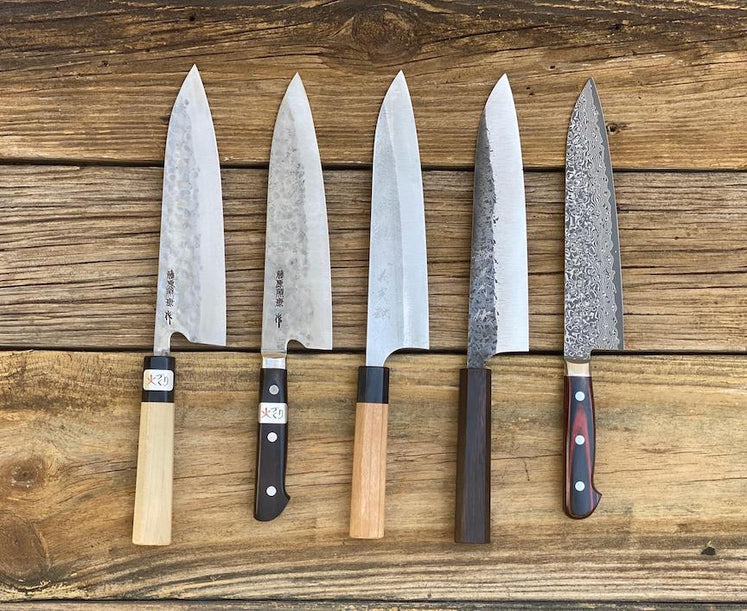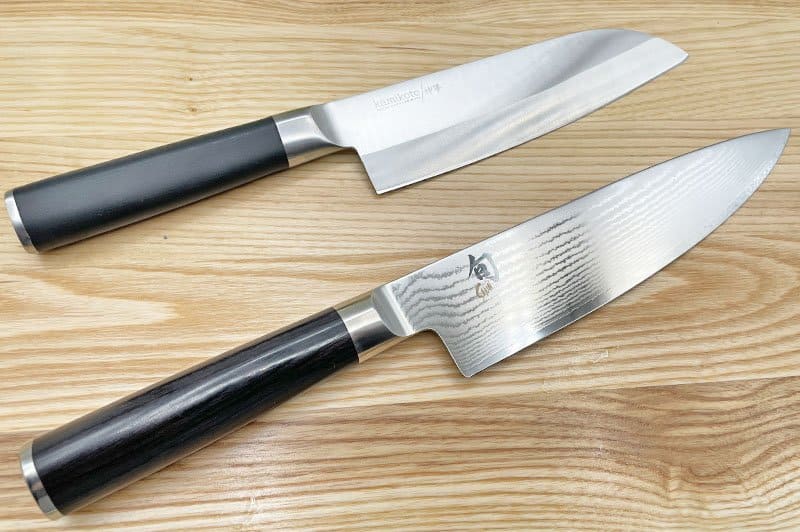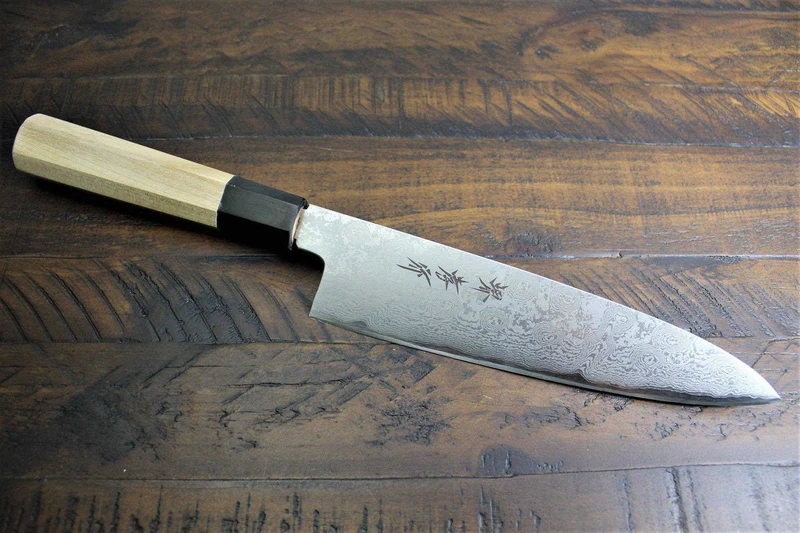Last updated on January 20th, 2024 at 02:13 am
Tools matter in culinary arts. Gyuto knives are popular among professionals and home cooks. The Japanese word “gyuto” means “beef sword,” and this multifunctional knife is a culinary must. This detailed tutorial will explain what a Gyuto knife is, its history, design, applications, and why gourmet aficionados love it.
What is a Gyuto Knife?
Gyuto knives are Japanese chef’s knives with Western and Japanese elements. Its 8–12-inch, narrow, sharp blade distinguishes it. Its double-beveled edge and high-quality stainless steel or carbon steel blade make it appropriate for right- and left-handed users.
History of the Gyuto Knife
As Western cuisine influenced Japanese cuisine, the Gyuto knife was developed in Japan. The Gyuto knife, a hybrid of Western and Japanese cooking practices, combines Western durability and strength with Japanese precision and sharpness.
Why Choose a Gyuto Knife?

Kitchen Versatility
Chefs and cooks love Gyuto knives for their versatility. The Gyuto knife slices, dices, chops, and minces. Its small, sharp blade makes it perfect for cutting meat, seafood, veggies, and herbs.
Comfortable Ergonomics
Ergonomics make the Gyuto knife pleasant to hold and reduce strain during long use. Wood, resin, or composite handles are sturdy and balanced. This shape makes the knife easy to hold, improving cutting control and precision.
Sharp and durable
Gyuto knives have sharp blades for easy, precise cutting. High-quality steel keeps the blade sharp for longer, reducing sharpening. The blade’s endurance ensures that the knife can sustain daily usage without losing performance.
How to Use a Gyuto Knife?

To maximize your Gyuto knife, you must know how to use it. Gyuto knife usage tips:
Hold the knife correctly: For improved control, grip the knife handle with your dominant hand and place your index finger and thumb on the blade.
Use proper cutting techniques: Slicing, dicing, and chopping require suitable cutting skills. When slicing, use a moderate back-and-forth motion with the knife tip touching the cutting board.
Keep the blade sharp: Use an honing rod or whetstone to sharpen your Gyuto knife regularly. Sharp blades cut faster and safer.
Practice knife safety: Use Gyuto knives safely. Avoid cutting your fingers. For safety and knife control, choose a solid cutting board.
Choose the right cutting surface: Use a wood, bamboo, or plastic cutting board to avoid blade wear. Cutting stone or glass dulls the blade quickly.
Clean and maintain the knife: After each usage, wash the Gyuto knife with warm soapy water and a non-abrasive sponge. Dry it immediately to avoid moisture damage. To preserve the blade, place it in a knife block or on a magnetic strip.
What Makes a Gyuto Knife Different?

The Gyuto knife is unusual among kitchen knives:
Blade Shape: Gyuto knives have long, narrow blades with pointy tips. This design offers fine control and delicate cutting.
Versatility: The Gyuto knife can slice huge portions of meat and precisely dice vegetables.
Western Influence: The Gyuto knife is ideal for Western-style knife users who want Japanese blade sharpness and precision.
Balance: Gyuto knives usually balance at the blade-handle junction. This balance gives cutting stability and control.
Questions (FAQs)
Santoku and Gyuto knives differ in what ways?
Both knives are popular in Japanese cuisine, but their blade shapes and uses differ.
The longer, thinner Gyuto knife is better for slicing and precision cutting. The Santoku knife is shorter and wider for chopping and dicing.
Gyuto knives for lefties?
Gyuto knives are double-beveled, making them suited for right- and left-handed users. The symmetrical blade cuts smoothly from either side.
Gyuto knife sharpening: how often?
Knife usage and preference determine sharpening frequency. Use an honing rod to sharpen the blade periodically. When the knife becomes dull or honing no longer works, use a whetstone.
Can Gyuto knives cut bones?
Gyuto knives cannot cut bones. They’re for slicing and precision cutting. Bones can ruin a Gyuto knife. Bone-cutting requires a bone cleaver or butcher’s knife.
Gyuto knives: dishwasher-safe?
Dishwashing Gyuto knives is not advised. Heat, harsh detergents, and turbulent water harm the blade and handle. Hand-washing is best for knife quality. Use warm soapy water, rinse, and dry.
Gyuto knives: beginner-friendly?
Gyuto knives are beginner-friendly. Professional chefs love them, but beginning home cooks love them too. The Gyuto knife’s versatility, ergonomics, and balance allow beginners to create precise, professional-looking cuts.
Conclusion
Finally, the Gyuto knife blends the best of Western and Japanese cutlery. Its long, thin blade, ergonomic design, and sharpness make it a multipurpose and trustworthy kitchen tool. Gyuto knives are useful for chefs and household cooks alike.
A good Gyuto knife will improve your cooking and elevate your dishes. With appropriate care, your Gyuto knife will cut precisely and effortlessly for years.
If you’re in the kitchen and need a knife, try a Gyuto. Its legacy, craftsmanship, and usefulness will make it your favorite knife for cooking.
